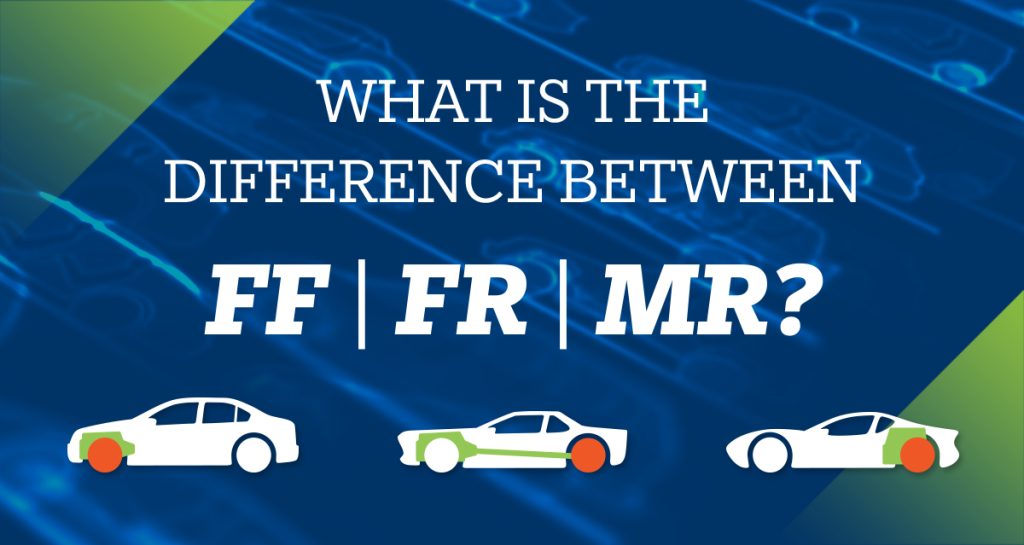Do you know what FF, MR, and FR means? Do you know the difference between the 3? There are so many things to think about if you’re on the hunt for a new car. Cost, make, two-doors or four? Compact or SUV? New or used? But what most people don’t actually think about, is the drivetrain layout. And since there’s no one-size fits all layout, understanding the different options is important and can help you choose a car that suits your life in the driver’s seat. So, before you pull the trigger on your next ride, here are the things you need to know about the engine and wheel drive layout.
Front engine, front-wheel drive (FF)
– The majority of cars on the road today feature engine placement in the front, while connecting the power source through two short drive axles to the front wheels. This design took off in the 1970’s when fuel efficiency became a dominating factor in automotive production. The more compact drivetrain and decreased weight of the car is more fuel efficient and since the weight of the engine is directly over the driven wheels, FF layouts provide more traction during acceleration and improve performance on slippery or icy roads. The downside? FF systems tend to wear out faster and have less of a turning radius, making it more difficult to achieve sharp turns. Additionally, they are considered “less fun” from a driving point of view.

Mid-engine, rear-wheel drive (MR)
– If your drive to work every day includes a metaphorical racetrack in your brain, you might want a car that can accelerate and take a corner – Formula One style. The MR layout does offer improved initial acceleration because the rear engine placement puts the weight at the rear of the car and better distributes weight, which leads to overall handling improvements. Unfortunately, this layout is best left to professional drivers who aren’t navigating icy, rainy or otherwise tough road conditions, as this layout can be very unforgiving with mistakes.

Front engine, rear-wheel drive (FR)
– One of the earliest layouts in automotive design. The FR layout places the engine at the front of the vehicle and drives the power to the rear wheels via driveshaft and differential. Most auto makers switched the majority of production units to FF layouts to increase fuel efficiency, lower cost, and increase safety. This doesn’t mean that FR is dead. Some of the most fun-to-drive cars have rear wheel drive. Sure, rear wheel drive cars aren’t for everyone, but for us “enthusiasts” they definitely have their place.
Let’s face it, we’re pretty dependent on the four-wheeled beauties to keep our lives moving. In fact, a survey conducted by tire manufacturer, Cooper Tire, found that the average American spends an average of 8 hours and 22 minutes a week behind the wheel. But what is more interesting is what the survey suggests about how we feel about our cars. 15 percent of people surveyed claimed they would rather break a bone than have their car break down. 13 percent said they would break up with their significant other rather than part with their ride. What does this mean you ask? We love our cars!
If your love of all things automotive is more of a passion, than a passing hobby – maybe a career in the world of automotive technology is right for you! If you’d like to learn more about a career that keeps America moving forward, check out the Automotive and Diesel Technology Programs at J-Tech Institute. We are training the next generation of automotive technicians. Contact us today to for more information or to schedule a tour of our 168,000 square foot facility in Jacksonville, FL.
